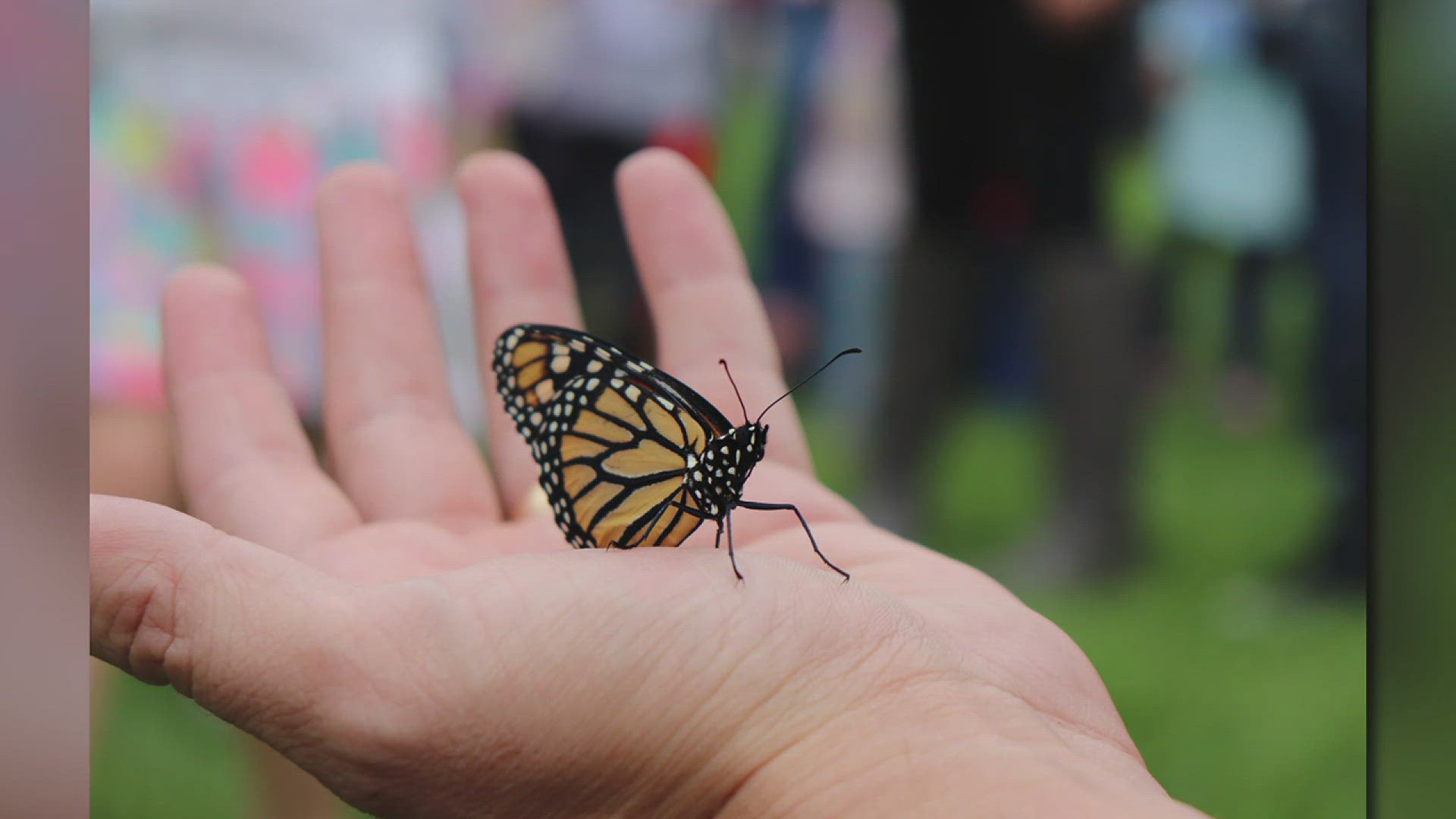GALESBURG, Ill. — Monarch butterflies can be found across Illinois, which is why they were named the state insect in 1975.
The notable orange-ish and black wings with white dots creates a unique appearance that sets them apart from other butterflies. Not only that, monarchs in North America are the only butterflies with a predictable and annual migration!
According to the Illinois Department of Natural Resources, monarchs produce several generations of butterflies each year. Each of those generations only lives for a few weeks, except the generation produced in late summer/early fall. That group of monarchs migrate around 2,500 miles to Mexico and can live for around six months.
To celebrate the monarch's migration season, Galesburg is once again hosting the Monarch Migration Festival on Saturday, Sept. 7. The 10th annual event is made possible through the University of Illinois Extension, Galesburg Parks and Recreation, Knox County Agriculture in the Classroom, Knox County Farm Bureau and Ms. MariPosa.
It's completely free to attend and goes from 10 a.m. to 3 p.m. at the Lakeside Nature Center, located at 1033 South Lake Storey Rd.
Organizers said there will be multiple education stations where attendees can learn about each stage of the monarch's lifecycle. There will also be a mobile playground, music, food trucks and vendors who will have information on nature groups and topics, along with selling nature-inspired goods.
And of course, the star of the show will be in attendance. News 8 spoke with Chris Enroth, a horticulture educator for Illinois Extension, who said there is a 100% chance monarch butterflies will be at the event. Depending on the weather, organizers will release butterflies they've been raising into the wild.
Enroth said it's getting very close to migration season for monarchs. A good indication of when that happens is when the Canadian goldenrod flower starts to bloom, he added. The yellow flower is common in Illinois and has just recently started to open up. Enroth said migration has begun, but that there's still a little bit of breeding for this final generation taking place.
"We do raise them to make sure that we have some. We call them livestock to have on hand to demonstrate and show people and get them comfortable with seeing butterflies, understanding them, and then we'll even tag them," Enroth said. "We put a little round sticker on the wing, and that tag has a code that if they make it down to Mexico that gets reported back to us, and it's a way that we can do some community science and track some of the migration patterns."
Tune into The Current from 4 to 5 p.m. on weekdays to catch live interviews impacting you, your family and your hometown as well as all of the biggest headlines of the day.

